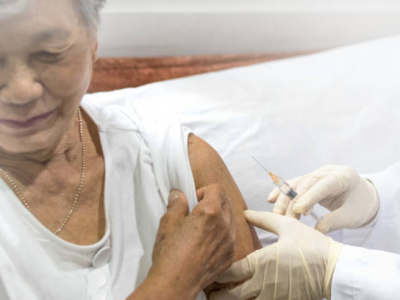As part of global efforts to focus attention on antibiotic resistance this week, the American Academy of Pediatrics (AAP) and collaborators from the US Centers for Disease Control and Prevention (CDC) today released updated guidelines for treating upper respiratory infections in kids.
The document features new guidance for treating strep throat and folds in advice the AAP released earlier this year on treating acute otitis media and bacterial sinusitis. The AAP published a document addressing all three conditions today in an early online edition of Pediatrics.
The guidelines outline a set of steps for judiciously prescribing antibiotics for each of the three conditions. They include applying strict diagnostic criteria, weighing the benefits and harms of antibiotic therapy, and considering situations when antibiotics may not be indicated.
The AAP originally published the clinical guidance on otitis media on Feb 25, following up with a similar document on bacterial sinusitis on Jul 1. The group said the principles, which also include choosing the appropriate dose for the shortest duration required, can be applied broadly to antibiotic use in general.
Avoiding 'post-antibiotic era'
Mary Anne Jackson, MD, lead author of the report and member of the AAP Committee on Infectious Diseases, said in a statement, "This report is particularly timely as we enter the winter season, when many respiratory viruses commonly circulate."
The CDC estimates that doctors write as many as 10 million antibiotic prescriptions each year for infections they are unlikely to help, a pattern of overuse that helps fuel the global problem of antibiotic resistance. In September the CDC released a report that said antibiotic-resistant organisms sicken more than 2 million Americans each year and lead to 23,000 deaths.
Tom Frieden, MD, MPH, CDC director, said in an agency statement today that because of antibiotic resistance, physicians are nearly running out of options for treating some infections. "If doctors prescribe antibiotics carefully and patients take them as prescribed, we can preserve these lifesaving drugs and avoid entering a post-antibiotic era."
In the new guidance, the AAP said the most important factor in assessing a youngster with a sore throat is determining if beta hemolytic group A Streptococcus is the cause. Unlike otitis media or bacterial sinusitis, strep throat can be confirmed with lab testing, it said.
The guidance details the symptoms that should trigger testing, which include two or more of the following: absence of cough, presence of tonsil exudates or swelling, history of fever, swollen or tender anterior cervical lymph nodes, and age younger than 15 years.
In recommending antibiotic therapy for kids with strep throat, the AAP said benefits include reducing the duration of symptoms, preventing secondary cases, prevention of rheumatic fever, and preventing complications.
Managing the common cold, nonspecific upper respiratory infections, acute cough, and acute bronchitis in children should focus on symptom relief. "Antibiotics should not be prescribed for these conditions," the guidance states.
The AAP's release of the guidance is part of Get Smart About Antibiotics Week, an annual observance that began in 2008. The event is part of an international collaboration that also includes European Antibiotic Awareness Day, Australia's Antibiotic Awareness Week, and Canada's Antibiotic Awareness Week.
On Nov 15 the European Centre for Disease Prevention and Control (ECDC) released two antibiotic resistance reports—a surveillance document and a self-survey of national experts—that showed a rise in carbapenem-resistant infections (see link to CIDRAP News story below).
Lancet special section
In a related development, Lancet Infectious Diseases yesterday posted a report written by a group of experts that the journal assembled, along with seven related commentaries by others who are working on antibiotic resistance issues.
In an editorial introducing the special section, the journal said its goal with the 42-page report is to explore why antibiotic resistance has become a global problem and to propose solutions to avert the impending crisis. It focused on Gram-negative and Gram-positive bacteria and excluded tuberculosis, which it said could easily warrant its own repot.
The editors said it produced the comprehensive report rather than a series of separate articles to reflect the interconnectedness of drug-resistance issues as part of a complex web. "Analysis of these points of intersection may provide clues to opportunities for collaboration and intervention," the journal's editorial team wrote.
The nine-part document, with each part written by a different author or expert group, covers the epidemiology of antibiotic resistance, challenges in managing the problem, the relationship between people and animals, and strategies for prevention and treatment.
The commission's final section details issues that require urgent actions, along with ones that require longer-term goals. For example, the paper points out that new antibiotics are urgently, but drug-development programs in both academic and pharmaceutical settings has withered. New incentives and funding approaches could help spark the discovery of new drugs, the report says.
See also:
Nov 18 AAP guidance document
Nov 18 CDC press release
Nov 18 AAP press release
Nov 17 Lancet Infect Dis special section landing page
Nov 15 CIDRAP News story "EU reports show rise in carbapenem-resistant infections"

























